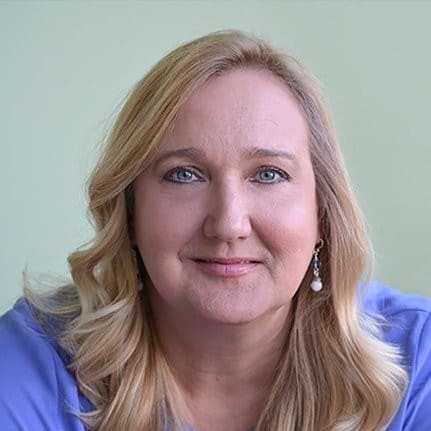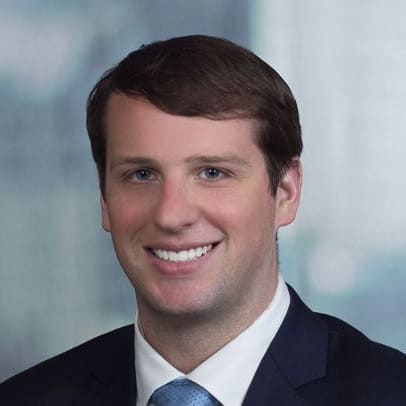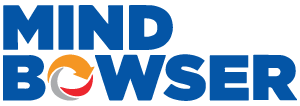Chronic Care Management billing has become the backbone of recurring hospital revenue. The 2025 CMS updates and APCM bundles changed how hospitals earn, track, and defend every dollar. Clean claims depend on complete documentation, verified consent, and time-stamped records. The right automation and FHIR-aligned data design can recover up to 3–5% of lost revenue. Even a 1% swing in denials can mean hundreds of thousands of dollars.
When I first built a Chronic Care Management (CCM) workflow for a regional health system, I learned that the hardest part was not coding the service. It was keeping every note, timestamp, and consent aligned with evolving billing rules that were introduced mid-year.
That lesson still holds true in 2025. Chronic Care Management billing is not just a compliance exercise. It is a systemic problem that resides at the intersection of data design, clinical workflows, and financial accountability.
The recent CMS updates to CCM, Complex CCM, and the new Advanced Primary Care Management (APCM) bundles changed the math for every care team. Hospitals and digital health operators now need to prove supervision, link each minute of service to a signed care plan, and store that evidence in a retrievable format.
In this piece, I will unpack the billing codes that drive revenue, the top denial codes and root causes we see in the field, and the automation layers that close documentation gaps. We will also look at the financial impact of small denial shifts and how data design grounded in FHIR can future-proof compliance.
Bottom line: Chronic Care Management billing is now an engineering problem disguised as a reimbursement task, and the teams who treat it that way will win the next fiscal year.
The Centers for Medicare and Medicaid Services (CMS) refreshed the Chronic Care Management (CCM) rule set for 2025. Every CFO, CMIO, and CTO working in population health should understand how these codes fit together before configuring care platforms or revenue systems.
1. Standard CCM (CPT 99490, 99439)
These codes remain the foundation for chronic care billing.
The critical compliance point is documentation. Each time an entry is made, it must reflect patient-specific actions and reference an active care plan. CMS auditors still deny claims that lack timestamps or show copy-pasted notes.
2. Complex CCM (CPT 99487, 99489)
Complex CCM is designed for patients with higher acuity, requiring extensive medical decision-making.
To qualify, care plans must demonstrate ongoing adjustments based on patient status and specialist input. A single missing note can trigger a post-payment audit.
Related read: Mastering Complex CCM (99487/99489): Documentation, ROI, and Audit Readiness
3. Advanced Primary Care Management (APCM: G0556, G0557, G0558)
New for 2025, APCM bundles capture comprehensive care coordination under a single monthly payment. These codes shift billing from a minute-based accounting system to a bundled outcomes approach.
Hospitals that crosswalk CCM workflows into APCM bundles early can gain administrative relief. However, migrating too fast without validating eligibility logic can result in overbilling.
4. RHC and FQHC Update
CMS retired G0511 for rural health clinics (RHCs) and federally qualified health centers (FQHCs) in April 2025, replacing it with discrete CPT codes. Clinics have a grace period through July 2025 to reconfigure templates.
Leadership teams should verify their EHR can handle multiple CPT codes per month and that each template aligns with CMS supervision rules. Missing this update can result in delayed payments for months.
Bottom line: These billing codes are no longer “nice to know.” They define operational throughput, staffing ratios, and predictability of cash flow. Understanding them is the first step toward building an audit-proof Chronic Care Management billing engine.
When a claim fails, it is rarely because of the code. It fails because of the documentation. In 2025, CMS auditors expect Chronic Care Management programs to produce evidence that every billed minute is directly connected to a care plan and that the supervising provider maintains oversight throughout the cycle.
1. Patient Consent and Attribution
Consent must be explicit, documented, and stored within the patient’s record. Electronic or verbal consent is acceptable, but it must include the date, provider’s name, and service type. Many denials still stem from unsigned or misplaced consent forms. A clean workflow captures consent during enrollment and automatically links it to the billing record.
2. Comprehensive Care Plan
Each patient must have a dynamic plan that includes active diagnoses, goals, measurable outcomes, and assigned team members. The plan must update as interventions change. When surveyors request proof, a static PDF will not hold up. Systems should maintain versioned records that show plan updates and the responsible roles.
3. Time Capture and Overlap Controls
CCM minutes are cumulative within a calendar month; however, overlapping services are not permitted. For example, a care coordinator cannot bill for CCM and RPM services within the same 20-minute period. Best practice is to use timestamped task entries with automatic overlap detection. If a nurse logs 12 minutes in CCM and another 15 in RPM for the same patient, the system must reconcile and retain an audit trail.
4. Monthly Billing Hygiene
At the end of each month, billing teams should run a “clean claim” report that confirms total minutes, consent presence, care plan activity, and DOS accuracy. Errors in date of service or missing attestations remain the top reasons for payer denials.
5. Supervision and Compliance Accountability
For general supervision, CMS allows auxiliary staff to perform CCM under a physician’s direction without direct oversight. However, proof of supervisory review must be traceable. Audit logs should show who reviewed, what was approved, and when.
The strongest programs treat documentation as part of care delivery, not as post-hoc paperwork. Each note, timestamp, and consent is a financial artifact that can defend thousands of dollars during an audit. Automation that prompts teams to fill missing fields before closing a case reduces denial risk more than any post-processing correction.
Related read: CCM Audit Risk & Protection: A 2026 Denial Defense Playbook
Every Chronic Care Management program has three levers that directly affect financial performance: enrollment, claim integrity, and denial prevention. The most profitable systems focus on these fundamentals before scaling new service lines.
1. Enrollment and Panel Hygiene
Revenue begins with accurate patient enrollment. Each patient must meet CMS criteria, which include having at least two chronic conditions expected to last twelve months or longer. Enrollment errors occur when diagnosis lists are outdated or when consent is missing at the point of intake.
Regular audits of the active patient list can prevent billing ineligible individuals. Some teams tie eligibility logic to ICD-10 problem lists in the EHR, automatically flagging patients who no longer meet criteria. This simple filter maintains consistent monthly revenue and reduces recoupment risk.
2. Clean Claim Prechecks
Pre-submission validation should be built into the billing workflow. Each claim must verify:
This checklist can be automated through EHR rules or middleware integrations. Clean claims also depend on accurate mapping of diagnoses. A mismatch between a chronic condition and the care management code can trigger payer denials, even if all documentation is accurate.
3. Top Denial Codes and Root Causes
The most common denial reasons remain consistent across payers:
Each of these stems from workflow design flaws, not coding errors. Fixing them requires automation that cross-checks consent, notes, timestamps, and care plan linkage before claim submission.
4. RHC and FQHC Specifics
Rural and community clinics face higher denial rates during the transition from G0511 to discrete CPT codes. A simple configuration issue in the EHR can prevent multiple CPT codes from being submitted for the same patient within a month. Clinics should test every template in staging before the July 2025 deadline. CFOs should request weekly variance reports during this period to monitor cash flow impact.
5. Finance Impact of a 1% Denial Swing
In a hospital generating $5 million annually from Chronic Care Management billing, a 1% increase in denial rates equals $50,000 in lost revenue. Over a twelve-month cycle, that small error compounds into a six-figure gap. CFOs and revenue leaders should track denial trends at least monthly and treat a 1% shift as a system alert, not an accounting variance.
Bottom line: Every lost claim is preventable. Chronic Care Management revenue depends on consistent data hygiene and automation that makes compliance part of daily operations. The next section will explore how structured data design and FHIR alignment can make that reliability possible.
Related read: Chronic Care Management CPT Codes: A Practical Guide For CTOs To Unlock Revenue, Quality, and Audit Readiness
Data quality now drives Chronic Care Management revenue as much as clinical performance. In 2025, CMS expects hospitals and digital health providers to prove the connection between documented care, time logs, and the billing event. That proof lives in structured data. The strongest programs design their EHR and FHIR layers to automate compliance.
Every care management claim can be traced through a handful of FHIR resources. When mapped correctly, these records serve as a live audit trail.
1. Condition → Eligibility Logic
Each chronic condition should exist as an active Condition resource tagged with ICD-10 codes. The eligibility engine queries this resource monthly to verify that the patient still qualifies for CCM or APCM. Automating this step avoids billing patients who have resolved or misclassified diagnoses.
2. CarePlan → Goals and Interventions
The CarePlan resource defines goals, outcomes, and responsible parties. Each update must link back to an assigned clinician. Systems should version every change and store timestamps for when a goal is achieved, replaced, or discontinued. During an audit, this version history serves as evidence of ongoing management.
3. Task → Outreach Actions and Time Logs
Every phone call, message, or coordination task is logged as a Task resource. Start and stop times populate the monthly total automatically. The EHR can calculate cumulative minutes without manual tallying. When integrated with billing, this ensures that CPT 99490 or 99439 thresholds are met before claim submission.
4. Observation → RPM Signal Feed
If the patient uses remote monitoring devices, readings are stored as Observation resources. These values link to the care plan and task records. A single abnormal reading that triggers a nurse call becomes a billable activity when documented through these connected data points.
5. Provenance → Compliance Proof
The Provenance resource tracks who entered, modified, or approved each record. This data protects the supervising provider by showing clear oversight for every billed service.
A structured FHIR map turns documentation into a living billing ledger. Instead of searching for proof during an audit, the system produces it by design.
Automation should make compliance invisible to the care team. When designed correctly, it reduces denials while saving clinical time.
1. Notes, Timestamps, and Consent Capture
Each CCM note should auto-stamp the time and prompt users to confirm consent. The system should not allow billing closure if consent or a current care plan is missing. These pre-checks close 70% of common denial gaps before submission.
2. SmartForms and Checklists
Epic, Cerner, and Meditech environments can embed SmartForms that require completion of mandatory fields. A missing care goal, an outdated diagnosis, or an unsigned note triggers an in-system alert rather than a post-billing rejection.
3. SMART on FHIR Launchers
Embedding a launch button for eligibility and documentation review allows coordinators to confirm all criteria before submitting claims. These integrations shorten billing cycles and improve team confidence.
4. Attribution and Supervision Logs
Every CCM or APCM task should store the name of the supervising provider and the date of review. This creates automatic supervision evidence that auditors now require.
A clean claim is not just a billing success. It is an operational proof that care, documentation, and compliance are aligned perfectly. To maintain that standard every month, hospitals need a systematic approach that connects audit trails, evidence packets, and revenue cycle analytics.
1. Evidence Packet Checklist
CMS and commercial payers expect every billed claim to be defensible within 48 hours of request. The fastest way to respond is by maintaining a pre-assembled packet for each patient. It should include:
When each element is captured in structured data, the packet can be generated instantly from the EHR. Teams that still compile records manually spend an average of four hours per audit. Automation reduces that effort to minutes.
2. Pre-Claim Edits and Workqueues
Revenue cycle teams should establish daily validation rules that flag missing documentation before billing. Common pre-claim edit triggers include:
Each alert should appear directly in the work queue, not buried in a billing report. This design allows coordinators to fix issues in real time rather than after denials occur.
3. Denial Root Causes
Across more than 50 client audits in 2024 and 2025, four denial patterns emerged:
These issues have a simple common thread: manual documentation. Each one disappears when systems require structured data entry.
4. Finance Impact of a 1% Denial Swing
A 1% change in the denial rate has measurable consequences. For a hospital with five million dollars in annual Chronic Care Management revenue, a single point swing equals $50,000 lost or gained. If that denial trend persists for a year, the financial variance exceeds the salary of a full-time care coordinator. CFOs should track denials as a core financial KPI, not just a compliance metric.
5. Audit Readiness as a Continuous Process
Audit readiness is not about crisis management; it is a standing discipline. Monthly self-audits, random chart pulls, and supervisor sign-offs maintain both compliance and cash flow stability. The goal is for every claim to be defensible before it is even submitted.
Eliminate denials, capture every minute, and build audit-ready workflows that turn compliance into predictable revenue.
Chronic Care Management programs succeed or fail on their return on investment. In 2025, the margin line depends on two forces: how effectively a hospital converts eligible patients into active participants and how precisely it captures and defends every billable minute. The math is not complicated, but it requires discipline, automation, and a CFO mindset at the workflow level.
1. Panel Size and Enrollment Rate
The foundation of the ROI model starts with panel size. A typical mid-market hospital may have 10,000 patients with two or more chronic conditions. Even a 15% enrollment rate translates into 1,500 active CCM participants. At an average reimbursement of $62 per patient per month, that base alone represents more than $1.1 million in annual recurring revenue.
2. Minutes Distribution
Most CCM patients fall into the 20 to 39-minute range per month, qualifying for CPT 99490. Roughly 20% exceed 60 minutes and qualify for Complex CCM or APCM bundles. Tracking these minute distributions allows CFOs to model predictable income instead of waiting for billing reconciliation at month-end.
3. Payor Mix and Reimbursement Variability
Medicare and Medicare Advantage dominate chronic care billing. However, Medicaid and commercial plans are catching up with similar codes. A shift of just 10% of the population from traditional Medicare to Medicare Advantage can raise or lower total reimbursement by nearly $80,000 annually, depending on the payer’s local rates.
Bottom line: Enrollment and accurate minute tracking drive more predictable revenue than rate changes.
Related read: CCM Billing 2025: Codes, APCM & ROI
1. Team Models
Hospitals usually choose between three CCM staffing models:
Each model has trade-offs in cost and supervision. RN-led programs produce the highest quality documentation but cost more per encounter. MA-led and hub models achieve scale faster but need tighter audit controls.
2. Productivity and Utilization
A well-trained coordinator logs six to eight patients per hour while maintaining full documentation. With automation for time tracking and consent capture, that number can rise to ten. Over a year, that increase translates into 20 to 25% higher revenue without additional staff.
3. Quality and Readmission Effects
CCM participation correlates with reduced readmissions and emergency visits. CMS data shows a 13% decrease in hospitalizations for enrolled patients. That reduction supports not only direct reimbursement but also value-based care metrics that improve incentive payments.
1. Break-Even Formula
The crossover point between CCM and APCM depends on patient complexity. If the average CCM participant generates more than 60 minutes of coordination time, APCM becomes more profitable. APCM bundles can produce up to $100 per patient per month compared to the $62 baseline for standard CCM.
2. Operational Indicators
APCM fits best when:
3. Financial Scenarios
For a 1,000-patient panel:
A 1% denial swing in this model equals $12,000 annually. Preventing it pays for most automation initiatives within months.
Rural and community clinics must execute a structured migration plan as they move from G0511 to individual CPT codes.
1. Code Mapping and EMR Build
Create a one-to-one mapping of G0511 activities to 99490, 99439, and 99487. Update templates to reflect CPT descriptions and thresholds.
2. Staff Training and Policy Alignment
Train every coordinator on the new codes and documentation standards. Include scenario-based examples that show how to handle overlapping services like RPM or TCM.
3. CFO Tracking Dashboard
Build a dashboard to monitor claims processed, denials, and net revenue by payer. Use the first ninety days post-transition to compare performance against baseline G0511 revenue.
Related read: Chronic Care Management Medicare 2025: How APCM Turns Compliance Into Recurring Revenue
At Mindbowser, we approach Chronic Care Management billing as a data and workflow problem, not just a compliance checklist. Our product teams have implemented CCM and APCM programs for hospital networks, digital health startups, and RHCs across multiple EHR ecosystems. What we build is simple: automation that ensures every note, consent, and timestamp supports a clean claim.
These accelerators shorten implementation cycles, reduce manual errors, and lift recurring revenue by improving documentation accuracy.
1. Automating Timestamps to Cut Denials
A regional health network deployed an automated timestamp and consent capture workflow through its coordination platform. Within three months, the team reduced denials by 22% and cut claim submission time by half. The new process now flags incomplete records before billing, protecting both revenue and compliance.
2. Standardizing Care Plans to Improve Compliance
A population health provider adopted a digital care planning tool to unify patient onboarding and intervention templates. The change led to a 19% increase in compliant claims and faster month-end reconciliation. Teams reported fewer billing corrections and greater efficiency in patient follow-ups.
3. Linking RPM Data to Documentation for Higher Reimbursement
A multi-specialty group integrated its remote patient monitoring data with Chronic Care Management documentation. The automated workflow connected device readings to care notes, producing a 14% improvement in average reimbursement and removing manual data entry from daily operations.
4. AI Summaries That Expand Care Capacity
A hospital system introduced an AI-powered chart summarization tool for its nurse coordinators. Documentation time fell by 40%, freeing capacity to manage 25% more patients per month without sacrificing accuracy or audit readiness.
These examples show that automation and structured data design drive both financial and clinical performance.
Mindbowser’s process starts with a short discovery phase where we benchmark your current CCM or APCM workflows. We map documentation touchpoints, time logs, and audit trails, then align them with CMS standards.

Chronic Care Management billing has evolved into a measurable discipline that ties clinical performance to financial stability. The 2025 CMS updates and APCM bundles have raised the bar for accuracy and documentation. Success now depends on integrating technology, process discipline, and data structure at every point of care delivery.
Hospitals that continue to rely on manual workflows will face increasing denials, delayed reimbursements, and compliance risks. In contrast, organizations that build audit-ready data pipelines and automate consent, time capture, and evidence generation will see smoother revenue cycles and stronger quality scores.
Every minute logged, every care plan updated, and every consent captured represents more than compliance. It represents financial integrity, patient trust, and system-level reliability.
The next 12 months will define which care management programs thrive under APCM and which struggle under audit pressure. The difference will not come from codes or policies but from execution — consistent, data-driven, and verifiable at every step.
Physicians, nurse practitioners, physician assistants, and clinical nurse specialists can bill for CCM and APCM services. The billing provider must have an established relationship with the patient and maintain general supervision over care coordination. Auxiliary staff may perform CCM activities as long as their work is documented under the provider’s direction.
Providers must record patient consent, maintain an active care plan with measurable goals, and log time spent on coordination activities. Each entry must include the staff member’s name, date, and duration of service. Systems should retain all documentation for at least seven years and produce it within 48 hours of a payer request.
Automation helps by embedding compliance checkpoints directly into daily workflows. Examples include automatic timestamping for calls, consent verification pop-ups, and time-based billing alerts. Hospitals using automation reduce denial rates by an average of 12 to 18% while improving coordinator productivity by up to 25%.
For a hospital generating five million dollars in CCM or APCM revenue, a 1% denial change equals fifty thousand dollars in lost or recovered revenue. Over a year, that difference can fund additional staff, technology upgrades, or expansion into new care management services. Tracking this metric monthly gives CFOs a real-time view of operational health.
If a majority of patients consistently exceed 60 minutes of coordination time each month, or if the care team manages high-acuity, multi-specialty populations, APCM bundles typically yield higher ROI and lower administrative overhead.

We worked with Mindbowser on a design sprint, and their team did an awesome job. They really helped us shape the look and feel of our web app and gave us a clean, thoughtful design that our build team could...


The team at Mindbowser was highly professional, patient, and collaborative throughout our engagement. They struck the right balance between offering guidance and taking direction, which made the development process smooth. Although our project wasn’t related to healthcare, we clearly benefited...

Founder, Texas Ranch Security

Mindbowser played a crucial role in helping us bring everything together into a unified, cohesive product. Their commitment to industry-standard coding practices made an enormous difference, allowing developers to seamlessly transition in and out of the project without any confusion....

CEO, MarketsAI

I'm thrilled to be partnering with Mindbowser on our journey with TravelRite. The collaboration has been exceptional, and I’m truly grateful for the dedication and expertise the team has brought to the development process. Their commitment to our mission is...

Founder & CEO, TravelRite

The Mindbowser team's professionalism consistently impressed me. Their commitment to quality shone through in every aspect of the project. They truly went the extra mile, ensuring they understood our needs perfectly and were always willing to invest the time to...

CTO, New Day Therapeutics

I collaborated with Mindbowser for several years on a complex SaaS platform project. They took over a partially completed project and successfully transformed it into a fully functional and robust platform. Throughout the entire process, the quality of their work...

President, E.B. Carlson

Mindbowser and team are professional, talented and very responsive. They got us through a challenging situation with our IOT product successfully. They will be our go to dev team going forward.

Founder, Cascada

Amazing team to work with. Very responsive and very skilled in both front and backend engineering. Looking forward to our next project together.

Co-Founder, Emerge

The team is great to work with. Very professional, on task, and efficient.

Founder, PeriopMD

I can not express enough how pleased we are with the whole team. From the first call and meeting, they took our vision and ran with it. Communication was easy and everyone was flexible to our schedule. I’m excited to...

Founder, Seeke

We had very close go live timeline and Mindbowser team got us live a month before.

CEO, BuyNow WorldWide

Mindbowser brought in a team of skilled developers who were easy to work with and deeply committed to the project. If you're looking for reliable, high-quality development support, I’d absolutely recommend them.

Founder, Teach Reach

Mindbowser built both iOS and Android apps for Mindworks, that have stood the test of time. 5 years later they still function quite beautifully. Their team always met their objectives and I'm very happy with the end result. Thank you!

Founder, Mindworks

Mindbowser has delivered a much better quality product than our previous tech vendors. Our product is stable and passed Well Architected Framework Review from AWS.

CEO, PurpleAnt

I am happy to share that we got USD 10k in cloud credits courtesy of our friends at Mindbowser. Thank you Pravin and Ayush, this means a lot to us.

CTO, Shortlist

Mindbowser is one of the reasons that our app is successful. These guys have been a great team.

Founder & CEO, MangoMirror

Kudos for all your hard work and diligence on the Telehealth platform project. You made it possible.

CEO, ThriveHealth

Mindbowser helped us build an awesome iOS app to bring balance to people’s lives.

CEO, SMILINGMIND

They were a very responsive team! Extremely easy to communicate and work with!

Founder & CEO, TotTech

We’ve had very little-to-no hiccups at all—it’s been a really pleasurable experience.

Co-Founder, TEAM8s

Mindbowser was very helpful with explaining the development process and started quickly on the project.

Executive Director of Product Development, Innovation Lab

The greatest benefit we got from Mindbowser is the expertise. Their team has developed apps in all different industries with all types of social proofs.

Co-Founder, Vesica

Mindbowser is professional, efficient and thorough.

Consultant, XPRIZE

Very committed, they create beautiful apps and are very benevolent. They have brilliant Ideas.

Founder, S.T.A.R.S of Wellness

Mindbowser was great; they listened to us a lot and helped us hone in on the actual idea of the app. They had put together fantastic wireframes for us.

Co-Founder, Flat Earth

Mindbowser was incredibly responsive and understood exactly what I needed. They matched me with the perfect team member who not only grasped my vision but executed it flawlessly. The entire experience felt collaborative, efficient, and truly aligned with my goals.

Founder, Child Life On Call

The team from Mindbowser stayed on task, asked the right questions, and completed the required tasks in a timely fashion! Strong work team!

CEO, SDOH2Health LLC

Mindbowser was easy to work with and hit the ground running, immediately feeling like part of our team.

CEO, Stealth Startup

Mindbowser was an excellent partner in developing my fitness app. They were patient, attentive, & understood my business needs. The end product exceeded my expectations. Thrilled to share it globally.

Owner, Phalanx

Mindbowser's expertise in tech, process & mobile development made them our choice for our app. The team was dedicated to the process & delivered high-quality features on time. They also gave valuable industry advice. Highly recommend them for app development...

Co-Founder, Fox&Fork
